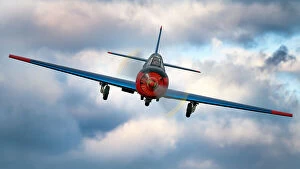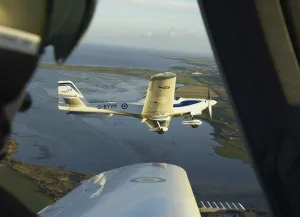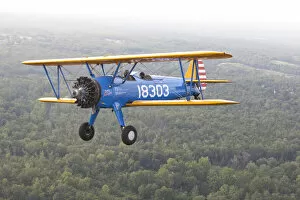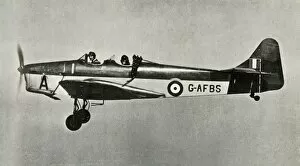Training Aircraft Collection
"Training Aircraft: Taking Flight into the Skies" Smoke-on, flying in clouds - these they have witnessed it all
All Professionally Made to Order for Quick Shipping
"Training Aircraft: Taking Flight into the Skies" Smoke-on, flying in clouds - these they have witnessed it all. From the iconic Bucker Bü-133C Jungmeister of 1935 to 1971, created by Bucker Flugzeugbau, to the historic Curtiss JN-4D Jenny from 1917 to 1925, crafted by Curtiss Aeroplane and Motor Company. In the 1980s, Northrop Corporation introduced their model T-38 Training Aircraft, a marvel designed for aspiring pilots. Meanwhile, back in 1929, an unknown creator gave birth to the Fleet Model 2 - a timeless symbol of aviation excellence. The Cessna 152 Aerobat of 1977 was another masterpiece brought forth by Cessna Aircraft Company Inc. , allowing trainees to soar through the skies with grace and precision. Similarly, Piper Aircraft Corp's Piper J-3 Cub from 1937 to1947 became synonymous with flight training during its era. Naval Aircraft Factory N3N-3 took off in1941 as a creation of Naval Aircraft Factory; this sturdy aircraft played an essential role in naval pilot instruction. The Tuskegee Institute also had its own set around ca. 1944 - their creators remain unknown but their impact on history is undeniable. Stealing hearts since its inception in1941 was The North American Harvard - an enigma whose creator remains shrouded in mystery yet continues to inspire generations of aviators. Finally, we have The Miles Master I from that same year; although its creator remains anonymous too, this remarkable plane left an indelible mark on aviation history. These training aircraft embody dreams taking flight and aspirations reaching new heights, and are more than mere machines; they represent passion and dedication towards mastering the art of aviation.

















